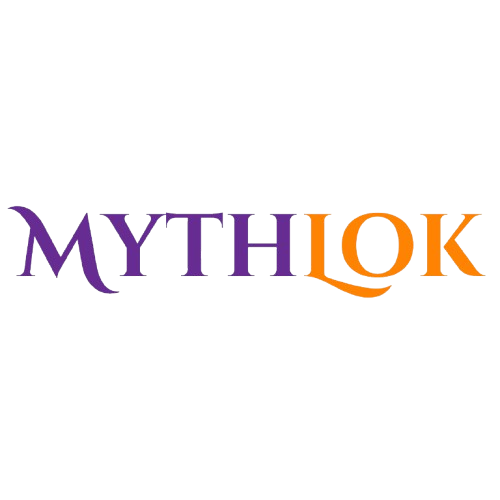Akop : The Corpse Eater
Listen
At a glance
| Description | |
|---|---|
| Origin | Philippine Mythology |
| Classification | Spirits |
| Family Members | N/A |
| Region | Philippines |
| Associated With | Funerals, Death, Corpse Eating |
Akop
Introduction
The Akop is a mysterious and chilling figure rooted in the mythology of the Tingguian (or Itneg) people of Northern Luzon in the Philippines. Unlike more recognizable entities such as the aswang or kapre, Akop belongs to a class of lesser-known spirits that emerge specifically in times of death and mourning. Associated with grief, funerary rites, and the spiritual perils that come with loss, Akop embodies the ancient belief that death leaves the living vulnerable not only emotionally, but also spiritually. As a mythological figure, Akop serves as a warning about the dangers that lurk in liminal spaces—between life and death, sorrow and healing.
Physical Traits
Akop’s terrifying form is one of the most distinctive in Philippine mythology. Far from human, he appears as a disjointed entity, lacking a torso altogether. His grotesque body consists solely of a swollen head attached directly to long, grotesque limbs. These slimy arms and legs are said to stretch unnaturally, slithering across darkened rooms or funeral spaces with uncanny silence.
This horrifying appearance isn’t just meant to scare; it reflects his liminal, incomplete nature. Without a central body, Akop becomes more of a suggestion of a being—an unfinished specter that slides into the shadows during wakes and rituals, preying on both the deceased and their loved ones. His ability to coil through cracks and rafters underscores his presence as something both real and spiritual, tangible yet evasive.
Family
In contrast to deities who belong to divine hierarchies or ancestral lineages, Akop stands alone. He is not part of any pantheon nor descended from major gods or goddesses. Instead, he’s best described as a funerary demon, perhaps one of many, whose existence is centered around death and decay.
In certain Tingguian accounts, Akop is said to operate in tandem with another death spirit named Ibwa, who consumes the flesh of the dead. While Ibwa devours the ears and soft tissue, Akop is drawn specifically to the fatty secretions that leak from corpses. This grim partnership, though not a family in the traditional sense, forms a thematic bond rooted in the desecration of the dead.
Other names
Akop doesn’t have widely known alternate names, but his traits bear striking similarities to other mythological figures across the Philippines. For instance, Abat in Waray folklore refers to a spirit that separates from its body and consumes internal organs. In some Visayan regions, terms like pak-an or awok refer to corpse-eating demons, conceptually similar to Akop. Meanwhile, the Alan of Tingguian lore are bizarre forest beings known for backward feet and hidden motives.
While each of these beings serves a different role, they all reflect cultural anxieties surrounding death, decomposition, and the unseen forces that may haunt the grieving. These thematic overlaps suggest that Akop is part of a broader regional understanding of funerary demons, even if his name remains unique to a specific cultural niche.
Powers and Abilities
Akop’s danger does not come from physical might or supernatural displays, but from his quiet, predatory presence during times of emotional fragility. His powers are deeply rooted in the vulnerability of the grieving, particularly during funeral rites. Unlike other mythological beings who unleash chaos through violence or storms, Akop infiltrates moments of mourning, feeding on sorrow and exploiting the spiritual openness left in the wake of death.
One of his most unsettling traits is his hunger for the fat that seeps from a corpse before burial. This grotesque appetite gives him a horrifyingly intimate connection to the deceased, making his violation of the body deeply personal. Consuming this fat is more than a physical act—it represents a spiritual desecration that interrupts the natural transition from life to death, inserting Akop into the sacred process of grieving and burial.
Akop’s most feared act is his targeting of the bereaved spouse. He is believed to stalk widows, attempting to embrace them in a fatal act of possession. Should he succeed, the widow or widower is said to die shortly thereafter, making his presence not just a symbol of mourning, but a potential cause of additional death. This role places him in a unique category of mythological beings who prey on emotional bonds, transforming sorrow into danger.
To fend off Akop’s silent attacks, the Tingguian people observe various protective rituals. Widows sleep under fishing nets to entangle his unnaturally long arms, wear seeds as amulets to repel his presence, and remain surrounded by mourners who act as spiritual guardians. These traditions reflect the community’s collective effort to protect the grieving and preserve the sanctity of mourning, ensuring that no spirit—no matter how stealthy—can claim another life amid the sorrow.
Modern Day Influence
Despite his relative obscurity, Akop’s legacy continues in subtle but meaningful ways. His story hasn’t entered mainstream pop culture, but the rituals and fears he represents still echo in Filipino funerary traditions.
For instance, modern Filipino wakes—lamay—are rich in superstitions believed to ward off spirits like Akop. Practices such as covering mirrors, placing salt around coffins, or burning incense are not random; they stem from ancient beliefs about spirits infiltrating mourning spaces. Though most urban dwellers might not name Akop specifically, the protective gestures show his indirect cultural persistence.
Moreover, Akop is gaining quiet traction in online spaces. Paranormal bloggers, folklore researchers, and digital storytellers are reviving these lesser-known spirits to educate and entertain. On platforms like TikTok, YouTube, and podcasts, creators delve into obscure mythologies, using characters like Akop to explore grief, fear, and the supernatural in a localized context.
In independent horror circles, Akop has inspired themes in short films and graphic novels where grief becomes a portal for spiritual disturbance. His fragmented form and quiet horror are perfect metaphors for the psychological fragmentation caused by loss. As modern storytelling leans into folklore horror, Akop stands as a chilling yet culturally rich character waiting to be rediscovered.
Related Images
Source
Fandom. (n.d.). Akop | Demonology. Genies Wiki. Retrieved from https://genies.fandom.com/wiki/Akop
Jocano, F. L. (n.d.). Outline of Philippine Mythology.
Left Bank Books. (n.d.). Legends of Lower Gods: Stories About Creatures From Philippine Mythology & Folklore. Retrieved from https://www.left-bank.com/book/9789719999881
Linn, S. N. (n.d.). Akop (Philippines). S. N. Linn. Retrieved from https://www.snlinn.com/post/akop-philippines
antheon.org. (n.d.). Akop. Encyclopedia Mythica. Retrieved from https://pantheon.org/articles/a/akop.html
Pinterest. (n.d.). Demonology in the Philippines Description: An evil entity known to prey …. Retrieved from https://www.pinterest.ph/pin/demonology-in-the-philippines-description-an-evil-entity-known-to-prey-on-widowed-people–765979848529559868/
Ramos, M. D. (n.d.). Philippine Myths, Legends, and Folktales (Realms of Myths and Reality). Amazon.com. Retrieved from https://www.amazon.com/Philippine-Legends-Folktales-Realms-Reality/dp/9710375685
Yvette Tan. (2016). A Crash Course on Philippine Lower Mythological Creatures. Yvette Tan. Retrieved from https://yvettetan.com/crash-course-philippine-lower-mythological-creatures/
Stoicaswang. (2015). Monsters & other supernatural beings from Filipino folklore & myths. Stoic Aswang. Retrieved from https://stoicaswang.wordpress.com/2015/12/23/supernatural-beings-and-creatures-of-philippine-folklore-and-mythology/
Frequently Asked Questions
What is lorem Ipsum?
I am text block. Click edit button to change this text. Lorem ipsum dolor sit amet, consectetur adipiscing elit. Ut elit tellus, luctus nec ullamcorper mattis, pulvinar dapibus leo.
What is lorem Ipsum?
I am text block. Click edit button to change this text. Lorem ipsum dolor sit amet, consectetur adipiscing elit. Ut elit tellus, luctus nec ullamcorper mattis, pulvinar dapibus leo.
What is lorem Ipsum?
I am text block. Click edit button to change this text. Lorem ipsum dolor sit amet, consectetur adipiscing elit. Ut elit tellus, luctus nec ullamcorper mattis, pulvinar dapibus leo.
What is lorem Ipsum?
I am text block. Click edit button to change this text. Lorem ipsum dolor sit amet, consectetur adipiscing elit. Ut elit tellus, luctus nec ullamcorper mattis, pulvinar dapibus leo.
What is lorem Ipsum?
I am text block. Click edit button to change this text. Lorem ipsum dolor sit amet, consectetur adipiscing elit. Ut elit tellus, luctus nec ullamcorper mattis, pulvinar dapibus leo.




